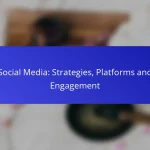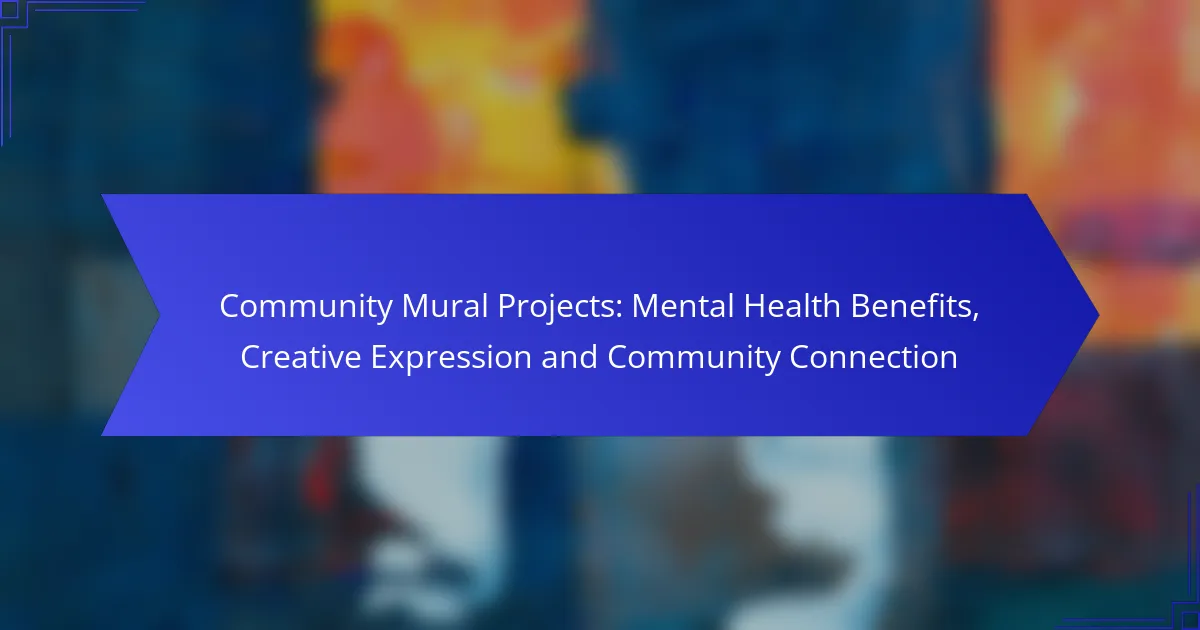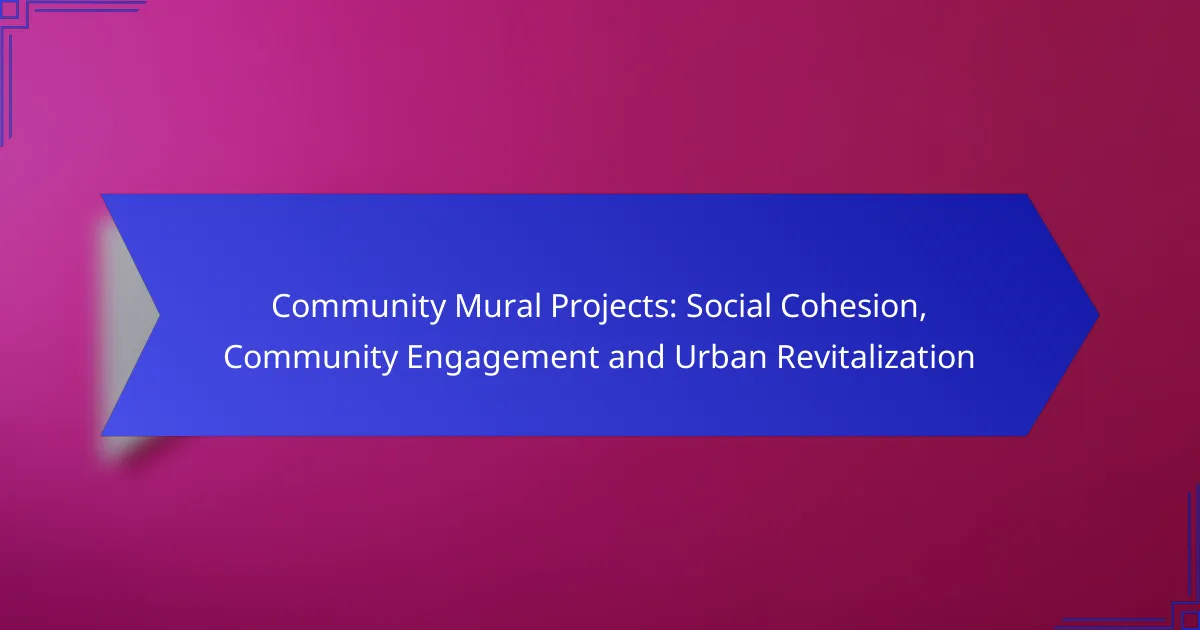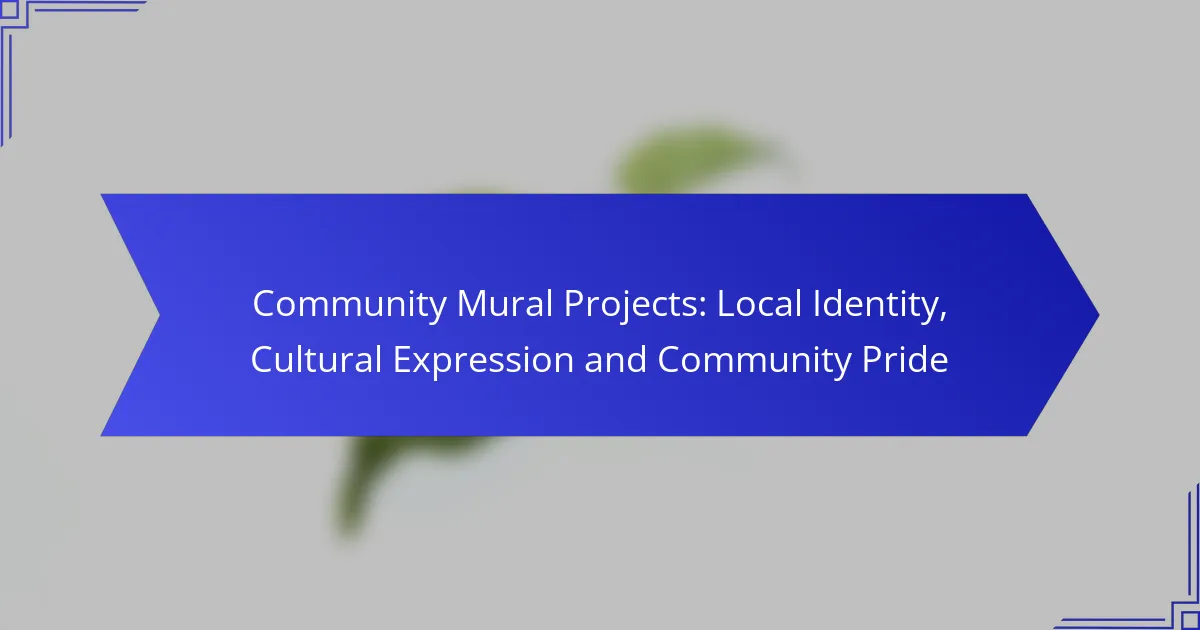Community mural projects serve as powerful tools for enhancing mental health by promoting creative expression and fostering social connections. By engaging individuals in collaborative artistic endeavors, these initiatives not only allow for personal expression but also cultivate a sense of belonging within the community. Participants experience improved emotional well-being as they connect with others and contribute to a shared vision, ultimately reducing feelings of isolation.

How do community mural projects improve mental health?
Community mural projects enhance mental health by providing a platform for creative expression, fostering social connections, and promoting a sense of belonging. These initiatives encourage individuals to engage with their community, which can lead to improved emotional well-being and reduced feelings of isolation.
Enhanced emotional well-being
Participating in community mural projects allows individuals to express their emotions and thoughts creatively. This form of artistic expression can lead to increased self-awareness and a greater understanding of personal feelings, contributing to overall emotional health.
Moreover, the act of creating art can be therapeutic, helping to release pent-up emotions and providing a sense of accomplishment. Engaging in such projects often leads to positive mood changes and enhanced life satisfaction.
Reduction in anxiety and depression
Community mural projects can significantly reduce symptoms of anxiety and depression by providing a constructive outlet for stress. Engaging in creative activities has been shown to lower cortisol levels, which are associated with stress.
Additionally, the collaborative nature of these projects fosters social interaction, which can combat feelings of loneliness and despair. Participants often report feeling more connected and less anxious after engaging in group mural activities.
Increased sense of belonging
Creating murals in a community setting fosters a strong sense of belonging among participants. When individuals contribute to a shared project, they develop a connection to their community and to each other, reinforcing social ties.
This sense of belonging can be particularly beneficial for marginalized groups, as it helps to create inclusive environments where everyone feels valued and recognized. Feeling part of a community can enhance individual identity and self-esteem.
Promotion of mindfulness
Community mural projects encourage mindfulness by requiring participants to focus on the present moment while they create. This focus can help individuals to temporarily set aside worries and anxieties, leading to a state of flow that is both calming and fulfilling.
Mindfulness practices, such as being attentive to colors, shapes, and textures, can enhance the overall experience of creating art, making it a meditative process that promotes mental clarity and relaxation.
Fostering resilience
Engaging in community mural projects can foster resilience by encouraging individuals to face challenges creatively. The process of overcoming obstacles during the creation of a mural—such as disagreements on design or technical difficulties—can build problem-solving skills and adaptability.
Furthermore, the support from fellow participants during these challenges can reinforce a sense of community and shared purpose, helping individuals to bounce back from setbacks and develop a more resilient mindset.

What are the creative expression benefits of community mural projects?
Community mural projects provide significant creative expression benefits by allowing individuals to engage in artistic activities that enhance their mental well-being and foster a sense of belonging. These projects serve as platforms for creativity, enabling participants to express their thoughts, emotions, and cultural narratives through visual art.
Encouragement of artistic skills
Community mural projects encourage participants to develop and refine their artistic skills, regardless of their prior experience. Individuals can learn various techniques, such as painting, drawing, and design, often through workshops or mentorship from experienced artists. This hands-on experience can boost confidence and inspire further artistic exploration.
Moreover, working on a mural allows artists to experiment with different styles and mediums, fostering a creative environment where they can push their boundaries. Participants often find joy in seeing their skills evolve as they contribute to a collective artwork.
Opportunities for personal storytelling
Mural projects provide a unique platform for personal storytelling, allowing individuals to share their experiences and perspectives visually. Artists can incorporate personal narratives into their work, making the mural a reflection of their life journeys, struggles, and triumphs. This process not only promotes self-expression but also helps in healing and processing emotions.
By sharing their stories through art, participants can connect with others who may have similar experiences, fostering empathy and understanding within the community. This shared vulnerability can strengthen community bonds and encourage open dialogue about mental health and personal challenges.
Collaboration among diverse artists
Collaboration is a key aspect of community mural projects, bringing together artists from various backgrounds and skill levels. This diversity enriches the creative process, as artists share ideas, techniques, and cultural influences, resulting in a more vibrant and inclusive mural. Working together fosters teamwork and enhances social connections among participants.
Collaboration also allows artists to learn from one another, expanding their artistic horizons and building a supportive network. This sense of community can lead to lasting friendships and partnerships that extend beyond the mural project.
Exploration of cultural identity
Community murals often serve as a canvas for exploring and celebrating cultural identity. Artists can express their heritage, traditions, and values through their work, contributing to a richer understanding of the community’s diversity. This exploration can promote pride in one’s background and encourage others to appreciate different cultures.
Incorporating cultural elements into murals can also spark conversations about identity and belonging, helping to bridge gaps between different community groups. This dialogue can foster a sense of unity and respect, ultimately enhancing the community’s overall mental health and cohesion.
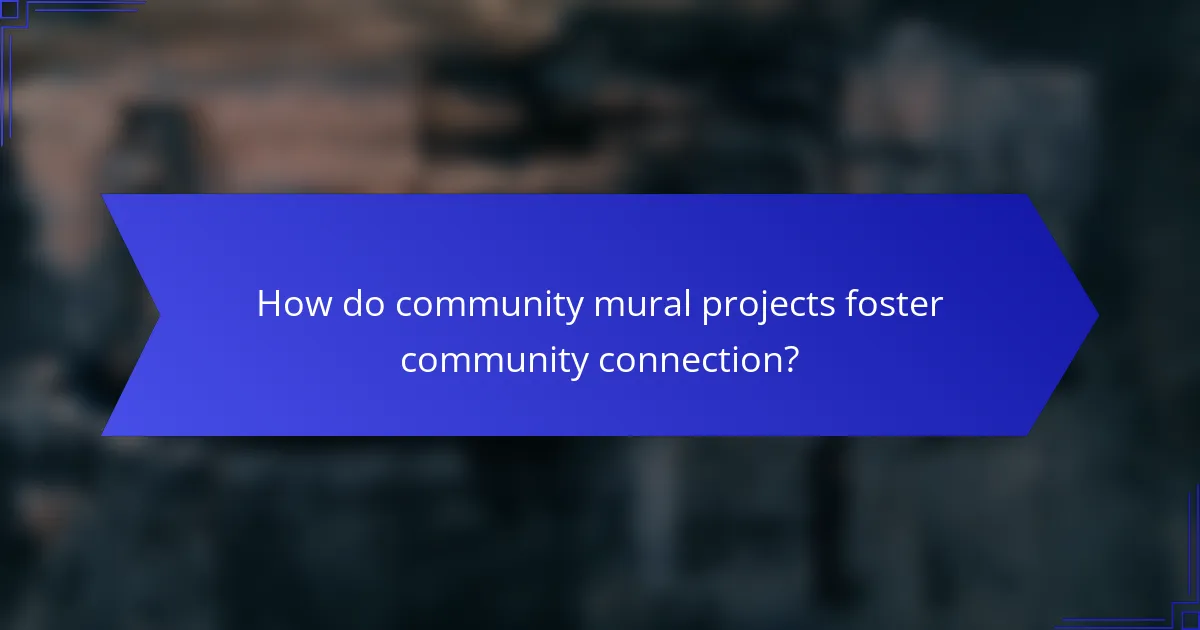
How do community mural projects foster community connection?
Community mural projects foster connection by bringing people together to collaborate on a shared artistic vision. These initiatives encourage interaction, build relationships, and create a sense of belonging among participants and residents.
Building social networks
Community mural projects create opportunities for individuals to meet and collaborate, thus building social networks. Participants often come from diverse backgrounds, which promotes inclusivity and strengthens community ties. Regular meetings and workshops can help deepen these connections over time.
Engaging in these projects can lead to friendships and partnerships that extend beyond the mural, enhancing the overall social fabric of the neighborhood.
Encouraging local pride
Murals often reflect the unique identity and culture of a community, fostering local pride among residents. When individuals contribute to a mural that represents their values and history, it instills a sense of ownership and pride in their surroundings.
Celebrating the completion of a mural with a community event can further enhance this pride, as residents come together to admire their collective achievement.
Facilitating intergenerational engagement
Community mural projects often involve participants of all ages, facilitating intergenerational engagement. This collaboration allows younger and older community members to share skills, stories, and perspectives, enriching the project and the relationships formed.
Workshops designed for various age groups can ensure that everyone has a role, making the mural a true representation of the entire community.
Creating public dialogue
Murals can serve as a platform for public dialogue on important social issues, encouraging conversations among community members. By addressing themes relevant to the community, such as mental health or cultural heritage, murals can spark discussions that might not occur otherwise.
Organizing events around the mural’s unveiling can provide a space for these dialogues, inviting feedback and fostering a deeper understanding of community concerns and aspirations.
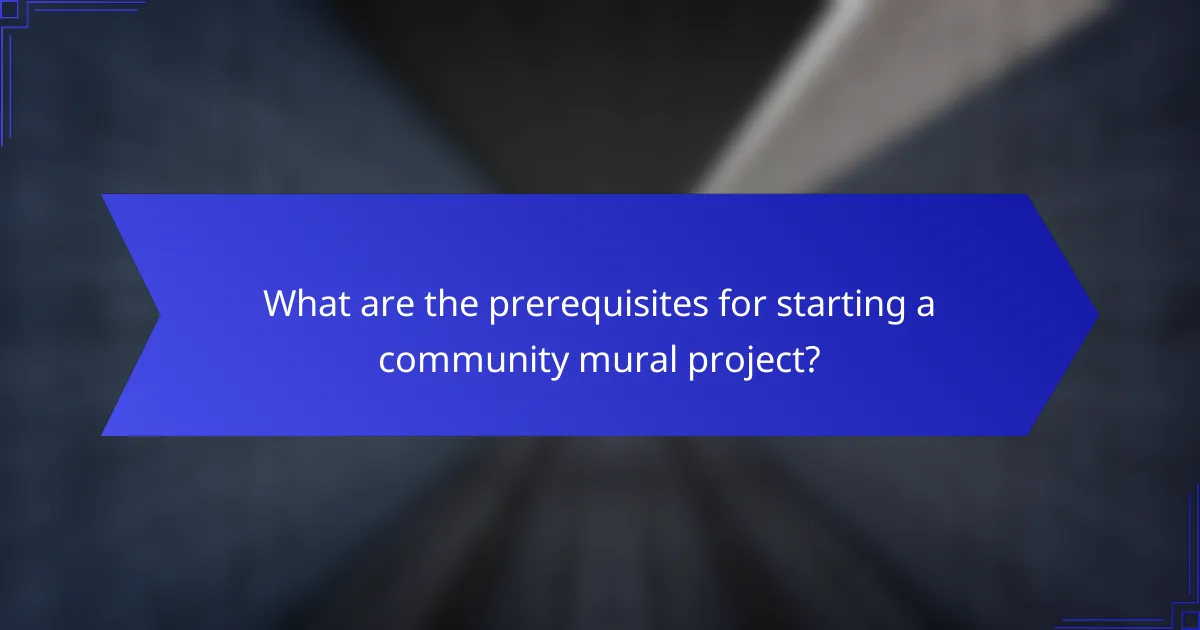
What are the prerequisites for starting a community mural project?
Starting a community mural project requires careful planning, community involvement, and adequate resources. Key prerequisites include understanding local needs, securing funding, and engaging stakeholders to ensure the project aligns with community values and goals.
Identifying community needs
Identifying community needs is crucial for a successful mural project. Conduct surveys or hold community meetings to gather input on themes and designs that resonate with local residents. This ensures that the mural reflects the community’s identity and addresses relevant social issues.
Consider collaborating with local organizations or schools to gain insights into the community’s priorities. Engaging diverse voices can help identify specific needs, such as mental health awareness or cultural representation, making the mural more impactful.
Securing funding and resources
Securing funding and resources is essential for executing a community mural project. Explore various funding sources, including local government grants, crowdfunding platforms, and sponsorship from local businesses. A budget should cover materials, artist fees, and any necessary permits.
In addition to financial resources, gather supplies such as paint, brushes, and scaffolding. Partnering with local art supply stores can sometimes yield discounts or donations, easing the financial burden on the project.
Engaging local stakeholders
Engaging local stakeholders is vital for fostering support and ensuring project sustainability. Identify key stakeholders such as neighborhood associations, local artists, and community leaders who can contribute to the project’s success. Their involvement can help build trust and enthusiasm within the community.
Regular communication and updates about the project’s progress can keep stakeholders invested. Consider hosting workshops or events to involve the community in the mural’s creation, enhancing ownership and pride in the final artwork.

What criteria should be used to select mural themes?
Selecting mural themes should focus on community relevance, inclusivity, and the potential to foster dialogue. Themes should resonate with local issues and reflect the diverse perspectives of community members to enhance engagement and connection.
Relevance to community issues
Mural themes should address pressing local issues, such as mental health awareness, social justice, or environmental concerns. Engaging with these topics can spark conversations and inspire action within the community. For instance, a mural highlighting mental health can provide visibility and reduce stigma, making it easier for individuals to seek help.
Consider conducting surveys or community meetings to identify the issues that matter most to residents. This approach ensures that the selected theme resonates with the community and reflects their collective experiences and aspirations.
Inclusivity of diverse perspectives
Incorporating diverse perspectives in mural themes is essential for fostering a sense of belonging. This can be achieved by involving individuals from various backgrounds, including different age groups, ethnicities, and socio-economic statuses, in the theme selection process. Their input can lead to a more comprehensive and relatable mural.
To promote inclusivity, consider hosting workshops where community members can share their stories and ideas. This collaborative approach not only enriches the mural’s theme but also strengthens community ties, ensuring that everyone feels represented and valued in the final artwork.



